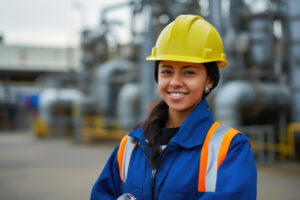
Celebrating Smart Energy Education
In today’s fast-paced world, it’s easy to enjoy the benefits of modern technology without thinking about the resources that make it all possible. After all,

In today’s fast-paced world, it’s easy to enjoy the benefits of modern technology without thinking about the resources that make it all possible. After all,

In our increasingly modern world, energy consumption and human activities have a profound impact on the environment. From the way we build our homes to the choices we make in our daily lives, each action can either harm or help the planet. As we face the challenges of climate change and biodiversity loss, it’s essential to recognize the relationship between our energy use, the environment, and how we can make sustainable choices that foster positive change.

Through the rise of a digitally connected world, globalization has become a central part of our lives not only economically but socially and culturally. This can be attributed to many factors, including the rise of new technology, artificial intelligence, increased ease and opportunities to travel, and a steady surge in consumer purchasing. It’s a combination that has resulted in a more connected world and, at the same time, a much more energy-intensive one. It’s true that these changes can offer great advantages and opportunities to both industries and consumers alike, but what are the hidden costs associated with these shifts, and how can we mitigate the consequences they present?

Water is often regarded as a renewable resource, given its continuous circulation through the hydrological cycle. However, despite its seemingly endless accessibility some people have, water is not an unlimited commodity. It is true that the planet is rich with water, yet not all of it is readily accessible or clean. Freshwater, the lifeblood of communities worldwide, is the key to sustaining life and supporting ecosystems. Yet, there’s a critical distinction between freshwater that exists and freshwater that is clean, potable, and readily available for human consumption.

Emerging in 1970 amid an environmental movement fueled by mounting concerns over pollution, biodiversity loss, and the degradation of natural habitats, Earth Day has since become an annual global celebration held on April 22nd. Over the years, it has transformed into a powerful force for environmental action, galvanizing millions worldwide to champion environmental awareness and sustainable practices. Today, Earth Day serves as a resounding call to action for individuals, communities, and governments to prioritize environmental stewardship and collaborate towards a more sustainable future. But, above all, it serves as a poignant reminder of our collective responsibility to safeguard and nurture the planet we all call home.

In recent years, the landscape of career opportunities has undergone significant changes, with trade professions emerging as a cornerstone of the modern workforce. Whether you’re a student exploring future career paths or a seasoned professional contemplating a career change, delving into the trades in 2024 could hold immense potential and promise.

From climate change to depleting natural resources, the world faces unprecedented environmental challenges. In response to the crises that have surfaced from these events, careers

At home, jobs are on the rise, and for good reason. After all, what’s better than being able to wake up, brush your teeth, and

People everywhere now seek assurance that their homes and workplaces are safe for both themselves and the planet. As the global population continues to expand and environmental consciousness becomes more prevalent, green building careers have emerged as essential contributors to a sustainable future. This transformation in the construction industry is a game changer when it comes to sustainability measures and goes beyond traditional practices. By emphasizing the creation of structures that are energy-efficient, environmentally responsible, and socially conscious, these revolutionary structures aim to provide comfort, stability, and safety without compromising the health of our delicate ecosystems.

In today’s rapidly changing world, the need for sustainability and environmental responsibility has never been more critical. What better place to build a better tomorrow